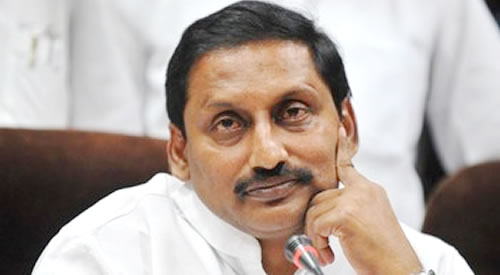The Legislative Assembly of Andhra Pradesh has finally concluded the process involving the expression of views required by it by the provisions of Article 3 of the Constitution on the Andhra Pradesh Reorganisation Bill, 2013, sent to it by the President of India.
However, the Chief Minister as Leader of the House on Saturday sent a notice to the Speaker under Rule 77 of the Assembly Rules for moving a resolution rejecting the Bill. This development was a repeat of previous attempts by the YSRC under the same Rule 77 to give notice of a similar resolution rejecting the Bill.
On previous occasions, the Speaker had rejected these resolutions out of hand. However on the last day of the discussions on the Bill after informing the Assembly that the views of the Assembly would be sent to the President, the Speaker concluded the process by announcing that he would send the expression of views to the President.
He thereafter raised the issue of the notice of the Leader of the House of an official resolution as also of several non-official resolutions. The Speaker then ‘deemed’ that the CM’s official resolution to be moved and put it to voice vote and pronounced it to have passed. And as result of this, decided that the remaining resolutions are not necessary as they are of similar nature and adjourned the Assembly sine die.
What is the position of this ‘rejection’ resolution?
First, Rule 77 requires a notice of 10 days. This time has not passed. However, the time requirement can be waived by the Speaker explicitly – which he did not do. Second, a government resolution has to be approved by the Cabinet.
Third, Rule 77 applies to deliberations of issues under the jurisdiction of the Assembly. Fourth , the Assembly was seized of the matter under Article 3 of the Constitution which is not part of the normal Assembly processes.
Fifth, Rule 77 requires that any resolution has to be moved by the member or minister who has given notice and seconded by another before discussion or debate takes place after which voting on the resolution is carried out.
Sixth, given electronic voting machine connections available at the member’s desks, no voice vote is called for. If a division of votes is required then it needs to be accurately determined if the correct balance of the ‘expression of views’ is to be conveyed to the Prescient and Parliament.
To sum up, therefore
There was no Cabinet meeting or any decision of the resolution moved by the chief minister. This is attested by the vociferous protest of all his Telangana Cabinet colleagues including the deputy chief minister, who have all put this fact in writing to the Speaker and governor. As such, the CM is deemed to have misled the House by an incorrect statement. The Resolution was not moved by its sponsor nor was it seconded. There was no debate and therefore the resolution is infirm and without legality.
The whole process amounts to a reduction of Legislative and Statutory processes to a farce.
The purpose of this exercise is not in keeping with Legislative norms and does not serve any ostensible purpose other than grandstanding by the CM and his supporters.
- Gautam Pingle (New Indian Express)
 Telangana Talkies | Leading Telangana News, Movies & Entertainment Portal Website with the latest news from Telangana. We present to the world politics, movies, business updates from Telangana & the capital Hyderabad
Telangana Talkies | Leading Telangana News, Movies & Entertainment Portal Website with the latest news from Telangana. We present to the world politics, movies, business updates from Telangana & the capital Hyderabad

